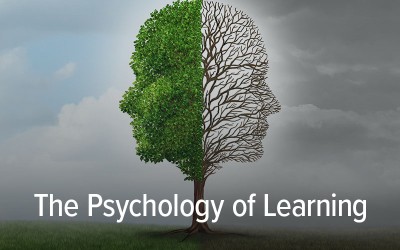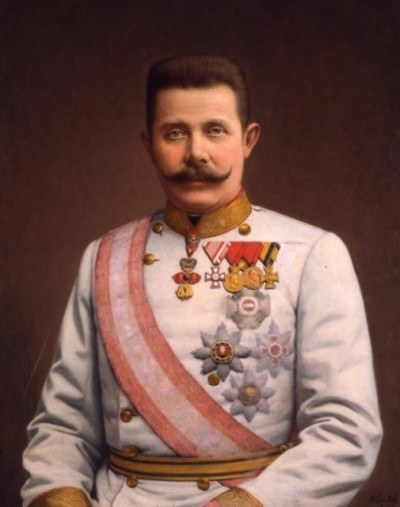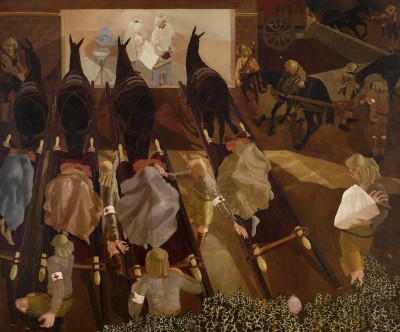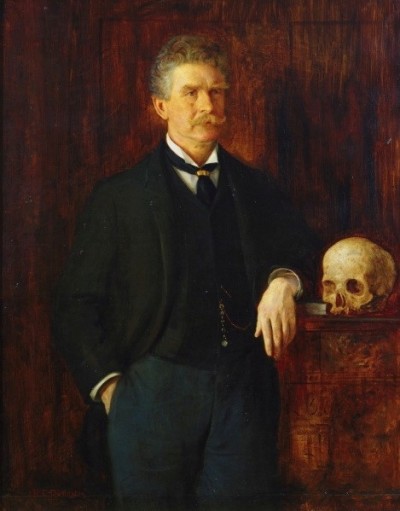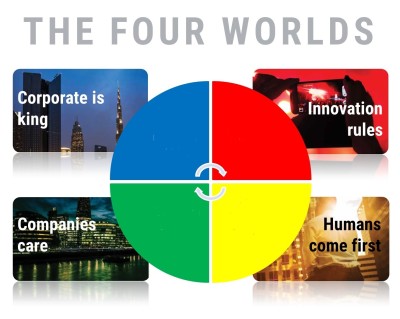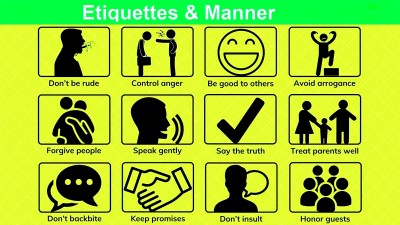Course description
The Psychology of Learning
Childhood Cognitive Development & the Case Study of Language Learning
In the nineteenth century – and, in too many countries, throughout much of the twentieth – children were regarded and taught as if they were just small versions of adults. It took two educational psychologists, Jean Piaget, a Swiss, and Maria Montessori, an Italian, to demonstrate that children’s cognitive skills were simply not the same as adults’. In short, children see and analyse the world around them very differently from their parents. Of course, Sigmund Freud, the father of psychoanalysis, had already outlined stages which young children had to navigate to become balanced adults. Piaget and Montessori did not share Freud’s focus though on the psychological health of adults as their starting point: it was children they observed, interacted with and offered guidelines for more effective learning.
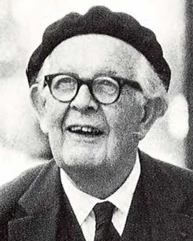 Jean_Piaget_in_Ann_Arbor_(cropped).png (193×241)Let’s start with Jean Piaget’s long career observing and working with children. Born in 1896, Piaget, like so many others interested in human psychological development at that time, was greatly influenced by Freud in the 1920s. It was then that he began to outline his theory of ‘genetic epistemology’ which depended on cognitive developmental phases in childhood. These were based on individual children’s biology and age.
Piaget identified four of these stages, each of which had to be completed before a child could move onto a higher one. This was similar to Freud’s conception of psychological development, where a child’s failure to work through a stage meant difficulties in living later in life. So, although Piaget believed biological readiness might well differ from one child to another and so the ages they began and completed stages were approximate, he was sure that the order the child worked through them could never change. Freud believed the same.
Jean_Piaget_in_Ann_Arbor_(cropped).png (193×241)Let’s start with Jean Piaget’s long career observing and working with children. Born in 1896, Piaget, like so many others interested in human psychological development at that time, was greatly influenced by Freud in the 1920s. It was then that he began to outline his theory of ‘genetic epistemology’ which depended on cognitive developmental phases in childhood. These were based on individual children’s biology and age.
Piaget identified four of these stages, each of which had to be completed before a child could move onto a higher one. This was similar to Freud’s conception of psychological development, where a child’s failure to work through a stage meant difficulties in living later in life. So, although Piaget believed biological readiness might well differ from one child to another and so the ages they began and completed stages were approximate, he was sure that the order the child worked through them could never change. Freud believed the same.  512px-Toddler_Cries_For_Phone.jpg (512×705)The first – from birth to about two years old – Piaget called the sensory-motor stage. Here, children experience the external environment through their senses and movement. They are extremely egocentric at this time and cannot imagine a view of the world that differs from their own. This is followed at around two years by the pre-operational stage, when a child is learning her first words and lasts till about seven years of age. There is a lot more play and pretending during this phase but children still have difficulty in using logic and manipulating information and applying it to different situations. They learn to speak and count, can describe the past and imagine the future but still find it hard to imagine different needs and perceptions than their own. They are learning to delay satisfaction of their needs and so do not immediately start crying if they do not get what they want but cannot always distinguish between reality and fiction, for instance believing in imaginary friends and animated characters in films as real beings. They cannot grasp ‘conservation of matter’ so that a chocolate suddenly hidden behind an adult’s back is, to them, gone.
In the third stage, which Piaget called ‘concrete operational’ and that lasts from about age seven to eleven years, children begin to think logically and understand ‘conservation of matter’. They can also generalize from one situation to others. For instance, when they understand that a Teddy bear is a toy, they will also grasp that the same is true of dolls, puppets and so on.
In the final stage, called ‘formal operational’, from age twelve till around fifteen, children can organize and categorise information, reason scientifically, form a hypothesis and test it and consider hypothetical or imaginary situations.
It is important to remember that Piaget came up with these stages by watching and communicating with children – he had three of his own and spent hundreds upon thousands of hours with them – and, so, his ideas were very empirically based.
512px-Toddler_Cries_For_Phone.jpg (512×705)The first – from birth to about two years old – Piaget called the sensory-motor stage. Here, children experience the external environment through their senses and movement. They are extremely egocentric at this time and cannot imagine a view of the world that differs from their own. This is followed at around two years by the pre-operational stage, when a child is learning her first words and lasts till about seven years of age. There is a lot more play and pretending during this phase but children still have difficulty in using logic and manipulating information and applying it to different situations. They learn to speak and count, can describe the past and imagine the future but still find it hard to imagine different needs and perceptions than their own. They are learning to delay satisfaction of their needs and so do not immediately start crying if they do not get what they want but cannot always distinguish between reality and fiction, for instance believing in imaginary friends and animated characters in films as real beings. They cannot grasp ‘conservation of matter’ so that a chocolate suddenly hidden behind an adult’s back is, to them, gone.
In the third stage, which Piaget called ‘concrete operational’ and that lasts from about age seven to eleven years, children begin to think logically and understand ‘conservation of matter’. They can also generalize from one situation to others. For instance, when they understand that a Teddy bear is a toy, they will also grasp that the same is true of dolls, puppets and so on.
In the final stage, called ‘formal operational’, from age twelve till around fifteen, children can organize and categorise information, reason scientifically, form a hypothesis and test it and consider hypothetical or imaginary situations.
It is important to remember that Piaget came up with these stages by watching and communicating with children – he had three of his own and spent hundreds upon thousands of hours with them – and, so, his ideas were very empirically based.
 512px-Maria_Montessori_(portrait).jpg (512×683)In this, Maria Montessori, born in 1870, was very similar to Piaget. Montessori was an unusual child who rejected traditional gender stereotypes; for instance, she enrolled in an all-boys technical college to study engineering, before switching to medicine. Her first research interest was, in fact, with children experiencing cognitive delays, or mentally challenged children. In 1906, however, she was offered the opportunity to organize the care and education of children aged between two and seven of working parents from poor neighbourhoods. Wanting a chance to work with children without learning difficulties, she jumped at the offer. It was at this time that she began to develop her own theories of children’s cognitive development and to make recommendations as to how parents and teachers might best respond to these.
Maria Montessori was a truly remarkable woman, active as a psychologist and also as a vocal supporter of women’s rights. What’s more, she lived according to her principles. Unwilling to give up work, she would not marry the man she loved and who fathered her only son because then she would not be able to continue with her work. She therefore brought the boy up as a single mother in an age when such a way of life must have been almost unknown.
512px-Maria_Montessori_(portrait).jpg (512×683)In this, Maria Montessori, born in 1870, was very similar to Piaget. Montessori was an unusual child who rejected traditional gender stereotypes; for instance, she enrolled in an all-boys technical college to study engineering, before switching to medicine. Her first research interest was, in fact, with children experiencing cognitive delays, or mentally challenged children. In 1906, however, she was offered the opportunity to organize the care and education of children aged between two and seven of working parents from poor neighbourhoods. Wanting a chance to work with children without learning difficulties, she jumped at the offer. It was at this time that she began to develop her own theories of children’s cognitive development and to make recommendations as to how parents and teachers might best respond to these.
Maria Montessori was a truly remarkable woman, active as a psychologist and also as a vocal supporter of women’s rights. What’s more, she lived according to her principles. Unwilling to give up work, she would not marry the man she loved and who fathered her only son because then she would not be able to continue with her work. She therefore brought the boy up as a single mother in an age when such a way of life must have been almost unknown.
 512px-A_Free_Independent_Children.jpg (512×342)The first of Montessori’s principles concerns the importance of independence, as she believed that when children were able to achieve things for themselves, there was an increase in their self-confidence and respect that stayed with them throughout life, leading to self-esteem. Of course, children often wish to do things for themselves that are beyond their physical abilities. Observation, her second principle, is essential here, as by watching their child banging a stick on the floor, parents might realize how useful she would find a drum. Or if they can see that a little girl is trying to walk but has difficulty balancing, supplying a wagon she can push can offer her the support she needs to walk.
Montessori’s third principle is that teachers and parents should be guided by the child in deciding her wants and needs. It is important here not to be over-protective or to define the child’s needs ourselves but, rather, to provide them with stimuli to allow them to develop as they wish but, crucially, in a safe environment. Her fourth principle goes hand in hand with this. It is concerned with correcting children’s mistakes. Montessori believed that children needed adults to point out to them, for instance, how words should be pronounced properly but this should be done simply by repeating the word correctly, rather than directly by showing the child she has made a mistake. Correction can lead to a loss of self-esteem.
All this learning should take place in a ‘prepared environment’, which is safe and has child-sized furniture and fittings, so allowing kids to learn for themselves – Montessori’s concept of ‘the absorbent mind’. If children can learn something as complex as language without being taught it, they surely do not need lessons to learn to count – at least until the age of three, she thought. By playing, by talking and by getting opportunities designed to interest them, children will learn on their own.
Piaget’s and Montessori’s observations of children’s cognitive development changed the ways in which schools were organized because they deeply influenced educational policies and even the consciousness of parents about their children’s needs. From a nineteenth century premise that children needed to be disciplined – even beaten – to learn well, a growing permissiveness and a tendency to put children at the centre of learning (rather than teachers) gradually evolved and primary education changed forever.
One_of_Pavlov's_dogs.jpg (640×427)Most of Piaget’s and Montessori’s work, of course, was descriptive. It did nothing to explain how children learnt. In this second part of the lecture, we are going to consider three very different theoretical approaches to how children learn best and their implications for schooling.
First, let’s take a look at Ivan Pavlov, a Russian physiologist, whose influence on the study and treatment of human psychology has been as enormous as his work on human digestion was essential to medical science. In the late nineteenth century, Pavlov arranged an experiment to measure the amount of saliva dogs produced when offered food. He then complicated his experiment by ringing a bell immediately before the food arrived. As the dogs got used to the idea that the bell was the signal for mealtimes, they began to salivate before the food arrived. The bell was enough to cause an involuntary physical reaction.
The process of linking a neutral stimulus (the bell) with a real one (the food) so that the neutral stimulus produces the same response is called ‘classical conditioning’ and is still widely used in behavioural therapies today by gradually desensitizing people with phobias (or irrational fears) by exposing them to the object they are most frightened of, such as small, closed rooms or wide open spaces.
Pavlov was so highly regarded – he was awarded the Nobel Prize for Medicine in 1904 for his research into digestion – that even after the Russian Revolution in 1917, he continued to get all the funding for his research he required, despite having a very low and often expressed opinion of communist philosophy and policy. When Pavlov died in 1936, at the age of 86, always the scientist, Pavlov had a student sit next to his bed so that he could record the great man’s experience of dying.
Pavlov’s work was publicized in the United States by John B. Watson, the behviourist psychologist in the early years of the twentieth century and later by B. F. Skinner in the post-Second World War era. And it is to Skinner’s work on language learning that I wish to turn now.
First, it might be useful to examine the term ‘behaviourism’ though, as it ran completely counter to the introspection of Freud’s research into human consciousness. Basically, the behaviourists wished to replicate the natural scientific methods of chemistry and physics in psychology – something Freud thought impossible because of the complexity of humanity. As such, behaviourist research was focused only on what was observable: behaviour. Skinner referred to the brain as a black box whose psychology could never be studied scientifically. He suggested that all we could really know was the stimulus that caused a reaction (which, in psychology, is termed a response). (In Pavlov’s experiment, the bell would be the stimulus and salivation the response.) Another example might be that when the phone rings – the stimulus, we answer it – the response. What actually happens in the mind between the stimulus and response is in the black box and, hence, unknowable.
Similarly, a neutral stimulus will never produce a response unless it is reproduced many, many times. It is the repetition that leads to the dog linking the bell with food. As such, repeating something frequently is essential to the learning process. Skinner argued that we could speed up this process by giving rewards for learning – he called it ‘positive reinforcement’ – so that students getting gold stars, say, in their notebooks would be encouraged to learn faster. (Interestingly, a teacher managed to turn a young Steve Jobs onto learning by paying him $5 for every book he read! It’s a shame for students that there aren’t more examples of positive reinforcement like that at college!) In terms of learning foreign languages, then, students would listen to prompts and then give the appropriate responses. After many repetitions, the student would eventually get these right and assimilate them.
In short, behaviourism meant copying the best examples of language use. And that is how students throughout the 1960s, 1970s and even ‘80s learnt foreign tongues.
Yet, Noam Chomsky, a linguist who has since become a critic of US domestic and foreign policy and is still active today in his nineties, disagreed with Skinner and his behaviourist colleagues. He argued that we do not always choose to answer the phone when it rings and that children do not learn to speak their mother tongue by copying their parents at home. He noted that children first start to utter words when they are about two and, so, have probably spent most time until then with their parents. However, American toddlers often talk about themselves in the third person: “Mark wants ice-cream.” And they often get irregular past tenses wrong: “I goed to the shop with my daddy.” If children learnt language by copying from their mothers, how could they have learnt ‘goed’ and why did they refer to themselves as ‘Mark’, rather than ‘I’?
Chomsky suggested that the brain was like a computer, which had a ‘language acquisition device’ (LAD) in it. This gathered information – such as past tense verbs have –ed on their ends – and then the child over-generalised the conclusion to include irregular verbs too. Slowly but surely, as the LAD got more and more information, it refined the data until all the irregular verbs could be produced correctly. Chomsky’s approach – very similar to Piaget’s – was called ‘cognitivist’, meaning ‘thinking’.
Only a decade or two later though, the works of the great Soviet Russian linguist, Lev Vygotsky, made their appearance in the West and caused a sensation. Born in 1897, Vygotsky was producing his most revolutionary work in the late 1920s and early 1930s, when Soviet Russia was closed to outside influences and sharing knowledge between the capitalist West and the communist USSR was unthinkable. Vygotsky died at the age of only thirty-seven in 1934 of TB.
512px-A_Free_Independent_Children.jpg (512×342)The first of Montessori’s principles concerns the importance of independence, as she believed that when children were able to achieve things for themselves, there was an increase in their self-confidence and respect that stayed with them throughout life, leading to self-esteem. Of course, children often wish to do things for themselves that are beyond their physical abilities. Observation, her second principle, is essential here, as by watching their child banging a stick on the floor, parents might realize how useful she would find a drum. Or if they can see that a little girl is trying to walk but has difficulty balancing, supplying a wagon she can push can offer her the support she needs to walk.
Montessori’s third principle is that teachers and parents should be guided by the child in deciding her wants and needs. It is important here not to be over-protective or to define the child’s needs ourselves but, rather, to provide them with stimuli to allow them to develop as they wish but, crucially, in a safe environment. Her fourth principle goes hand in hand with this. It is concerned with correcting children’s mistakes. Montessori believed that children needed adults to point out to them, for instance, how words should be pronounced properly but this should be done simply by repeating the word correctly, rather than directly by showing the child she has made a mistake. Correction can lead to a loss of self-esteem.
All this learning should take place in a ‘prepared environment’, which is safe and has child-sized furniture and fittings, so allowing kids to learn for themselves – Montessori’s concept of ‘the absorbent mind’. If children can learn something as complex as language without being taught it, they surely do not need lessons to learn to count – at least until the age of three, she thought. By playing, by talking and by getting opportunities designed to interest them, children will learn on their own.
Piaget’s and Montessori’s observations of children’s cognitive development changed the ways in which schools were organized because they deeply influenced educational policies and even the consciousness of parents about their children’s needs. From a nineteenth century premise that children needed to be disciplined – even beaten – to learn well, a growing permissiveness and a tendency to put children at the centre of learning (rather than teachers) gradually evolved and primary education changed forever.
One_of_Pavlov's_dogs.jpg (640×427)Most of Piaget’s and Montessori’s work, of course, was descriptive. It did nothing to explain how children learnt. In this second part of the lecture, we are going to consider three very different theoretical approaches to how children learn best and their implications for schooling.
First, let’s take a look at Ivan Pavlov, a Russian physiologist, whose influence on the study and treatment of human psychology has been as enormous as his work on human digestion was essential to medical science. In the late nineteenth century, Pavlov arranged an experiment to measure the amount of saliva dogs produced when offered food. He then complicated his experiment by ringing a bell immediately before the food arrived. As the dogs got used to the idea that the bell was the signal for mealtimes, they began to salivate before the food arrived. The bell was enough to cause an involuntary physical reaction.
The process of linking a neutral stimulus (the bell) with a real one (the food) so that the neutral stimulus produces the same response is called ‘classical conditioning’ and is still widely used in behavioural therapies today by gradually desensitizing people with phobias (or irrational fears) by exposing them to the object they are most frightened of, such as small, closed rooms or wide open spaces.
Pavlov was so highly regarded – he was awarded the Nobel Prize for Medicine in 1904 for his research into digestion – that even after the Russian Revolution in 1917, he continued to get all the funding for his research he required, despite having a very low and often expressed opinion of communist philosophy and policy. When Pavlov died in 1936, at the age of 86, always the scientist, Pavlov had a student sit next to his bed so that he could record the great man’s experience of dying.
Pavlov’s work was publicized in the United States by John B. Watson, the behviourist psychologist in the early years of the twentieth century and later by B. F. Skinner in the post-Second World War era. And it is to Skinner’s work on language learning that I wish to turn now.
First, it might be useful to examine the term ‘behaviourism’ though, as it ran completely counter to the introspection of Freud’s research into human consciousness. Basically, the behaviourists wished to replicate the natural scientific methods of chemistry and physics in psychology – something Freud thought impossible because of the complexity of humanity. As such, behaviourist research was focused only on what was observable: behaviour. Skinner referred to the brain as a black box whose psychology could never be studied scientifically. He suggested that all we could really know was the stimulus that caused a reaction (which, in psychology, is termed a response). (In Pavlov’s experiment, the bell would be the stimulus and salivation the response.) Another example might be that when the phone rings – the stimulus, we answer it – the response. What actually happens in the mind between the stimulus and response is in the black box and, hence, unknowable.
Similarly, a neutral stimulus will never produce a response unless it is reproduced many, many times. It is the repetition that leads to the dog linking the bell with food. As such, repeating something frequently is essential to the learning process. Skinner argued that we could speed up this process by giving rewards for learning – he called it ‘positive reinforcement’ – so that students getting gold stars, say, in their notebooks would be encouraged to learn faster. (Interestingly, a teacher managed to turn a young Steve Jobs onto learning by paying him $5 for every book he read! It’s a shame for students that there aren’t more examples of positive reinforcement like that at college!) In terms of learning foreign languages, then, students would listen to prompts and then give the appropriate responses. After many repetitions, the student would eventually get these right and assimilate them.
In short, behaviourism meant copying the best examples of language use. And that is how students throughout the 1960s, 1970s and even ‘80s learnt foreign tongues.
Yet, Noam Chomsky, a linguist who has since become a critic of US domestic and foreign policy and is still active today in his nineties, disagreed with Skinner and his behaviourist colleagues. He argued that we do not always choose to answer the phone when it rings and that children do not learn to speak their mother tongue by copying their parents at home. He noted that children first start to utter words when they are about two and, so, have probably spent most time until then with their parents. However, American toddlers often talk about themselves in the third person: “Mark wants ice-cream.” And they often get irregular past tenses wrong: “I goed to the shop with my daddy.” If children learnt language by copying from their mothers, how could they have learnt ‘goed’ and why did they refer to themselves as ‘Mark’, rather than ‘I’?
Chomsky suggested that the brain was like a computer, which had a ‘language acquisition device’ (LAD) in it. This gathered information – such as past tense verbs have –ed on their ends – and then the child over-generalised the conclusion to include irregular verbs too. Slowly but surely, as the LAD got more and more information, it refined the data until all the irregular verbs could be produced correctly. Chomsky’s approach – very similar to Piaget’s – was called ‘cognitivist’, meaning ‘thinking’.
Only a decade or two later though, the works of the great Soviet Russian linguist, Lev Vygotsky, made their appearance in the West and caused a sensation. Born in 1897, Vygotsky was producing his most revolutionary work in the late 1920s and early 1930s, when Soviet Russia was closed to outside influences and sharing knowledge between the capitalist West and the communist USSR was unthinkable. Vygotsky died at the age of only thirty-seven in 1934 of TB.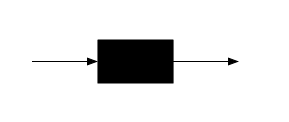 512px-Zone_of_proximal_development.svg.png (512×469)What Vygotsky said was that young learners are like buildings. They require a great deal of scaffold to support them in the early stages of construction, but as they grow (or become more knowledgeable), so they no longer depend on that scaffold – or teacher/guide – so much. He argued that we learn by receiving input which is just a little more demanding than what we know already and so steadily build our understanding. He called this learning paradigm the ‘zone of proximal development’. It explains why we can watch the news in Turkish every evening on YouTube for half an hour for a whole year, but by the end of it we still do not understand or speak Turkish. Basically, the input is too hard – it is not within the zone of proximal development.
Vygotsky also believed that we learn from those around us, teachers, friends, family and, nowadays, gaming competitors.
512px-Zone_of_proximal_development.svg.png (512×469)What Vygotsky said was that young learners are like buildings. They require a great deal of scaffold to support them in the early stages of construction, but as they grow (or become more knowledgeable), so they no longer depend on that scaffold – or teacher/guide – so much. He argued that we learn by receiving input which is just a little more demanding than what we know already and so steadily build our understanding. He called this learning paradigm the ‘zone of proximal development’. It explains why we can watch the news in Turkish every evening on YouTube for half an hour for a whole year, but by the end of it we still do not understand or speak Turkish. Basically, the input is too hard – it is not within the zone of proximal development.
Vygotsky also believed that we learn from those around us, teachers, friends, family and, nowadays, gaming competitors.

We look to them to create our own belief systems. This is why, for instance, so many members of a community in Chattogram are staunch believers in Islam whereas their fellow Bengalis across the border in Kolkata are equally convinced Hindus. We look to those around us for our truths, our beliefs and our knowledge, regardless of reasoning. Vygotsky’s school of thinking is termed social constructivism. We filter information through the beliefs of our communities and test it against their norms. Hence, Inuit can see many different kinds of white in snow, whereas we see just ‘white’; uneducated villagers think it self-evident that women are not as clever or powerful as men,

whereas – hopefully – you all think differently.
The problem with Vygotsky’s theory is, of course, that it cannot explain how change occurs or Einstein came up with a completely new notion of a relative universe.
And that is the end of our quick survey of the stages children go through in their thinking, how best to support them through these and what might be going on in their minds to make it all happen!
If you want to watch some videos on this topic, you can click on the links to YouTube videos below.
If you want to answer questions on this article to test how much you understand, you can click on the green box: Finished Reading?
Videos:
1. Piaget’s Stages of Cognitive development shown in Experiments on Kids (06:17)
2. Pavlov’s Dogs (03:54)
3. John B. Watson’s use of Conditioning to develop a fear of rats in Baby Albert (03:26)
4. B. F. Skinner’s Black box & Reinforcement (04:45)
5. Noam Chomsky’s Cognitivism Explained (01:47)

 Jean_Piaget_in_Ann_Arbor_(cropped).png (193×241)Let’s start with Jean Piaget’s long career observing and working with children. Born in 1896, Piaget, like so many others interested in human psychological development at that time, was greatly influenced by Freud in the 1920s. It was then that he began to outline his theory of ‘genetic epistemology’ which depended on cognitive developmental phases in childhood. These were based on individual children’s biology and age.
Piaget identified four of these stages, each of which had to be completed before a child could move onto a higher one. This was similar to Freud’s conception of psychological development, where a child’s failure to work through a stage meant difficulties in living later in life. So, although Piaget believed biological readiness might well differ from one child to another and so the ages they began and completed stages were approximate, he was sure that the order the child worked through them could never change. Freud believed the same.
Jean_Piaget_in_Ann_Arbor_(cropped).png (193×241)Let’s start with Jean Piaget’s long career observing and working with children. Born in 1896, Piaget, like so many others interested in human psychological development at that time, was greatly influenced by Freud in the 1920s. It was then that he began to outline his theory of ‘genetic epistemology’ which depended on cognitive developmental phases in childhood. These were based on individual children’s biology and age.
Piaget identified four of these stages, each of which had to be completed before a child could move onto a higher one. This was similar to Freud’s conception of psychological development, where a child’s failure to work through a stage meant difficulties in living later in life. So, although Piaget believed biological readiness might well differ from one child to another and so the ages they began and completed stages were approximate, he was sure that the order the child worked through them could never change. Freud believed the same.  512px-Toddler_Cries_For_Phone.jpg (512×705)The first – from birth to about two years old – Piaget called the sensory-motor stage. Here, children experience the external environment through their senses and movement. They are extremely egocentric at this time and cannot imagine a view of the world that differs from their own. This is followed at around two years by the pre-operational stage, when a child is learning her first words and lasts till about seven years of age. There is a lot more play and pretending during this phase but children still have difficulty in using logic and manipulating information and applying it to different situations. They learn to speak and count, can describe the past and imagine the future but still find it hard to imagine different needs and perceptions than their own. They are learning to delay satisfaction of their needs and so do not immediately start crying if they do not get what they want but cannot always distinguish between reality and fiction, for instance believing in imaginary friends and animated characters in films as real beings. They cannot grasp ‘conservation of matter’ so that a chocolate suddenly hidden behind an adult’s back is, to them, gone.
In the third stage, which Piaget called ‘concrete operational’ and that lasts from about age seven to eleven years, children begin to think logically and understand ‘conservation of matter’. They can also generalize from one situation to others. For instance, when they understand that a Teddy bear is a toy, they will also grasp that the same is true of dolls, puppets and so on.
In the final stage, called ‘formal operational’, from age twelve till around fifteen, children can organize and categorise information, reason scientifically, form a hypothesis and test it and consider hypothetical or imaginary situations.
It is important to remember that Piaget came up with these stages by watching and communicating with children – he had three of his own and spent hundreds upon thousands of hours with them – and, so, his ideas were very empirically based.
512px-Toddler_Cries_For_Phone.jpg (512×705)The first – from birth to about two years old – Piaget called the sensory-motor stage. Here, children experience the external environment through their senses and movement. They are extremely egocentric at this time and cannot imagine a view of the world that differs from their own. This is followed at around two years by the pre-operational stage, when a child is learning her first words and lasts till about seven years of age. There is a lot more play and pretending during this phase but children still have difficulty in using logic and manipulating information and applying it to different situations. They learn to speak and count, can describe the past and imagine the future but still find it hard to imagine different needs and perceptions than their own. They are learning to delay satisfaction of their needs and so do not immediately start crying if they do not get what they want but cannot always distinguish between reality and fiction, for instance believing in imaginary friends and animated characters in films as real beings. They cannot grasp ‘conservation of matter’ so that a chocolate suddenly hidden behind an adult’s back is, to them, gone.
In the third stage, which Piaget called ‘concrete operational’ and that lasts from about age seven to eleven years, children begin to think logically and understand ‘conservation of matter’. They can also generalize from one situation to others. For instance, when they understand that a Teddy bear is a toy, they will also grasp that the same is true of dolls, puppets and so on.
In the final stage, called ‘formal operational’, from age twelve till around fifteen, children can organize and categorise information, reason scientifically, form a hypothesis and test it and consider hypothetical or imaginary situations.
It is important to remember that Piaget came up with these stages by watching and communicating with children – he had three of his own and spent hundreds upon thousands of hours with them – and, so, his ideas were very empirically based.
 512px-Maria_Montessori_(portrait).jpg (512×683)In this, Maria Montessori, born in 1870, was very similar to Piaget. Montessori was an unusual child who rejected traditional gender stereotypes; for instance, she enrolled in an all-boys technical college to study engineering, before switching to medicine. Her first research interest was, in fact, with children experiencing cognitive delays, or mentally challenged children. In 1906, however, she was offered the opportunity to organize the care and education of children aged between two and seven of working parents from poor neighbourhoods. Wanting a chance to work with children without learning difficulties, she jumped at the offer. It was at this time that she began to develop her own theories of children’s cognitive development and to make recommendations as to how parents and teachers might best respond to these.
Maria Montessori was a truly remarkable woman, active as a psychologist and also as a vocal supporter of women’s rights. What’s more, she lived according to her principles. Unwilling to give up work, she would not marry the man she loved and who fathered her only son because then she would not be able to continue with her work. She therefore brought the boy up as a single mother in an age when such a way of life must have been almost unknown.
512px-Maria_Montessori_(portrait).jpg (512×683)In this, Maria Montessori, born in 1870, was very similar to Piaget. Montessori was an unusual child who rejected traditional gender stereotypes; for instance, she enrolled in an all-boys technical college to study engineering, before switching to medicine. Her first research interest was, in fact, with children experiencing cognitive delays, or mentally challenged children. In 1906, however, she was offered the opportunity to organize the care and education of children aged between two and seven of working parents from poor neighbourhoods. Wanting a chance to work with children without learning difficulties, she jumped at the offer. It was at this time that she began to develop her own theories of children’s cognitive development and to make recommendations as to how parents and teachers might best respond to these.
Maria Montessori was a truly remarkable woman, active as a psychologist and also as a vocal supporter of women’s rights. What’s more, she lived according to her principles. Unwilling to give up work, she would not marry the man she loved and who fathered her only son because then she would not be able to continue with her work. She therefore brought the boy up as a single mother in an age when such a way of life must have been almost unknown.
 512px-A_Free_Independent_Children.jpg (512×342)The first of Montessori’s principles concerns the importance of independence, as she believed that when children were able to achieve things for themselves, there was an increase in their self-confidence and respect that stayed with them throughout life, leading to self-esteem. Of course, children often wish to do things for themselves that are beyond their physical abilities. Observation, her second principle, is essential here, as by watching their child banging a stick on the floor, parents might realize how useful she would find a drum. Or if they can see that a little girl is trying to walk but has difficulty balancing, supplying a wagon she can push can offer her the support she needs to walk.
Montessori’s third principle is that teachers and parents should be guided by the child in deciding her wants and needs. It is important here not to be over-protective or to define the child’s needs ourselves but, rather, to provide them with stimuli to allow them to develop as they wish but, crucially, in a safe environment. Her fourth principle goes hand in hand with this. It is concerned with correcting children’s mistakes. Montessori believed that children needed adults to point out to them, for instance, how words should be pronounced properly but this should be done simply by repeating the word correctly, rather than directly by showing the child she has made a mistake. Correction can lead to a loss of self-esteem.
All this learning should take place in a ‘prepared environment’, which is safe and has child-sized furniture and fittings, so allowing kids to learn for themselves – Montessori’s concept of ‘the absorbent mind’. If children can learn something as complex as language without being taught it, they surely do not need lessons to learn to count – at least until the age of three, she thought. By playing, by talking and by getting opportunities designed to interest them, children will learn on their own.
Piaget’s and Montessori’s observations of children’s cognitive development changed the ways in which schools were organized because they deeply influenced educational policies and even the consciousness of parents about their children’s needs. From a nineteenth century premise that children needed to be disciplined – even beaten – to learn well, a growing permissiveness and a tendency to put children at the centre of learning (rather than teachers) gradually evolved and primary education changed forever.
One_of_Pavlov's_dogs.jpg (640×427)Most of Piaget’s and Montessori’s work, of course, was descriptive. It did nothing to explain how children learnt. In this second part of the lecture, we are going to consider three very different theoretical approaches to how children learn best and their implications for schooling.
First, let’s take a look at Ivan Pavlov, a Russian physiologist, whose influence on the study and treatment of human psychology has been as enormous as his work on human digestion was essential to medical science. In the late nineteenth century, Pavlov arranged an experiment to measure the amount of saliva dogs produced when offered food. He then complicated his experiment by ringing a bell immediately before the food arrived. As the dogs got used to the idea that the bell was the signal for mealtimes, they began to salivate before the food arrived. The bell was enough to cause an involuntary physical reaction.
The process of linking a neutral stimulus (the bell) with a real one (the food) so that the neutral stimulus produces the same response is called ‘classical conditioning’ and is still widely used in behavioural therapies today by gradually desensitizing people with phobias (or irrational fears) by exposing them to the object they are most frightened of, such as small, closed rooms or wide open spaces.
Pavlov was so highly regarded – he was awarded the Nobel Prize for Medicine in 1904 for his research into digestion – that even after the Russian Revolution in 1917, he continued to get all the funding for his research he required, despite having a very low and often expressed opinion of communist philosophy and policy. When Pavlov died in 1936, at the age of 86, always the scientist, Pavlov had a student sit next to his bed so that he could record the great man’s experience of dying.
Pavlov’s work was publicized in the United States by John B. Watson, the behviourist psychologist in the early years of the twentieth century and later by B. F. Skinner in the post-Second World War era. And it is to Skinner’s work on language learning that I wish to turn now.
First, it might be useful to examine the term ‘behaviourism’ though, as it ran completely counter to the introspection of Freud’s research into human consciousness. Basically, the behaviourists wished to replicate the natural scientific methods of chemistry and physics in psychology – something Freud thought impossible because of the complexity of humanity. As such, behaviourist research was focused only on what was observable: behaviour. Skinner referred to the brain as a black box whose psychology could never be studied scientifically. He suggested that all we could really know was the stimulus that caused a reaction (which, in psychology, is termed a response). (In Pavlov’s experiment, the bell would be the stimulus and salivation the response.) Another example might be that when the phone rings – the stimulus, we answer it – the response. What actually happens in the mind between the stimulus and response is in the black box and, hence, unknowable.
Similarly, a neutral stimulus will never produce a response unless it is reproduced many, many times. It is the repetition that leads to the dog linking the bell with food. As such, repeating something frequently is essential to the learning process. Skinner argued that we could speed up this process by giving rewards for learning – he called it ‘positive reinforcement’ – so that students getting gold stars, say, in their notebooks would be encouraged to learn faster. (Interestingly, a teacher managed to turn a young Steve Jobs onto learning by paying him $5 for every book he read! It’s a shame for students that there aren’t more examples of positive reinforcement like that at college!) In terms of learning foreign languages, then, students would listen to prompts and then give the appropriate responses. After many repetitions, the student would eventually get these right and assimilate them.
In short, behaviourism meant copying the best examples of language use. And that is how students throughout the 1960s, 1970s and even ‘80s learnt foreign tongues.
Yet, Noam Chomsky, a linguist who has since become a critic of US domestic and foreign policy and is still active today in his nineties, disagreed with Skinner and his behaviourist colleagues. He argued that we do not always choose to answer the phone when it rings and that children do not learn to speak their mother tongue by copying their parents at home. He noted that children first start to utter words when they are about two and, so, have probably spent most time until then with their parents. However, American toddlers often talk about themselves in the third person: “Mark wants ice-cream.” And they often get irregular past tenses wrong: “I goed to the shop with my daddy.” If children learnt language by copying from their mothers, how could they have learnt ‘goed’ and why did they refer to themselves as ‘Mark’, rather than ‘I’?
Chomsky suggested that the brain was like a computer, which had a ‘language acquisition device’ (LAD) in it. This gathered information – such as past tense verbs have –ed on their ends – and then the child over-generalised the conclusion to include irregular verbs too. Slowly but surely, as the LAD got more and more information, it refined the data until all the irregular verbs could be produced correctly. Chomsky’s approach – very similar to Piaget’s – was called ‘cognitivist’, meaning ‘thinking’.
Only a decade or two later though, the works of the great Soviet Russian linguist, Lev Vygotsky, made their appearance in the West and caused a sensation. Born in 1897, Vygotsky was producing his most revolutionary work in the late 1920s and early 1930s, when Soviet Russia was closed to outside influences and sharing knowledge between the capitalist West and the communist USSR was unthinkable. Vygotsky died at the age of only thirty-seven in 1934 of TB.
512px-A_Free_Independent_Children.jpg (512×342)The first of Montessori’s principles concerns the importance of independence, as she believed that when children were able to achieve things for themselves, there was an increase in their self-confidence and respect that stayed with them throughout life, leading to self-esteem. Of course, children often wish to do things for themselves that are beyond their physical abilities. Observation, her second principle, is essential here, as by watching their child banging a stick on the floor, parents might realize how useful she would find a drum. Or if they can see that a little girl is trying to walk but has difficulty balancing, supplying a wagon she can push can offer her the support she needs to walk.
Montessori’s third principle is that teachers and parents should be guided by the child in deciding her wants and needs. It is important here not to be over-protective or to define the child’s needs ourselves but, rather, to provide them with stimuli to allow them to develop as they wish but, crucially, in a safe environment. Her fourth principle goes hand in hand with this. It is concerned with correcting children’s mistakes. Montessori believed that children needed adults to point out to them, for instance, how words should be pronounced properly but this should be done simply by repeating the word correctly, rather than directly by showing the child she has made a mistake. Correction can lead to a loss of self-esteem.
All this learning should take place in a ‘prepared environment’, which is safe and has child-sized furniture and fittings, so allowing kids to learn for themselves – Montessori’s concept of ‘the absorbent mind’. If children can learn something as complex as language without being taught it, they surely do not need lessons to learn to count – at least until the age of three, she thought. By playing, by talking and by getting opportunities designed to interest them, children will learn on their own.
Piaget’s and Montessori’s observations of children’s cognitive development changed the ways in which schools were organized because they deeply influenced educational policies and even the consciousness of parents about their children’s needs. From a nineteenth century premise that children needed to be disciplined – even beaten – to learn well, a growing permissiveness and a tendency to put children at the centre of learning (rather than teachers) gradually evolved and primary education changed forever.
One_of_Pavlov's_dogs.jpg (640×427)Most of Piaget’s and Montessori’s work, of course, was descriptive. It did nothing to explain how children learnt. In this second part of the lecture, we are going to consider three very different theoretical approaches to how children learn best and their implications for schooling.
First, let’s take a look at Ivan Pavlov, a Russian physiologist, whose influence on the study and treatment of human psychology has been as enormous as his work on human digestion was essential to medical science. In the late nineteenth century, Pavlov arranged an experiment to measure the amount of saliva dogs produced when offered food. He then complicated his experiment by ringing a bell immediately before the food arrived. As the dogs got used to the idea that the bell was the signal for mealtimes, they began to salivate before the food arrived. The bell was enough to cause an involuntary physical reaction.
The process of linking a neutral stimulus (the bell) with a real one (the food) so that the neutral stimulus produces the same response is called ‘classical conditioning’ and is still widely used in behavioural therapies today by gradually desensitizing people with phobias (or irrational fears) by exposing them to the object they are most frightened of, such as small, closed rooms or wide open spaces.
Pavlov was so highly regarded – he was awarded the Nobel Prize for Medicine in 1904 for his research into digestion – that even after the Russian Revolution in 1917, he continued to get all the funding for his research he required, despite having a very low and often expressed opinion of communist philosophy and policy. When Pavlov died in 1936, at the age of 86, always the scientist, Pavlov had a student sit next to his bed so that he could record the great man’s experience of dying.
Pavlov’s work was publicized in the United States by John B. Watson, the behviourist psychologist in the early years of the twentieth century and later by B. F. Skinner in the post-Second World War era. And it is to Skinner’s work on language learning that I wish to turn now.
First, it might be useful to examine the term ‘behaviourism’ though, as it ran completely counter to the introspection of Freud’s research into human consciousness. Basically, the behaviourists wished to replicate the natural scientific methods of chemistry and physics in psychology – something Freud thought impossible because of the complexity of humanity. As such, behaviourist research was focused only on what was observable: behaviour. Skinner referred to the brain as a black box whose psychology could never be studied scientifically. He suggested that all we could really know was the stimulus that caused a reaction (which, in psychology, is termed a response). (In Pavlov’s experiment, the bell would be the stimulus and salivation the response.) Another example might be that when the phone rings – the stimulus, we answer it – the response. What actually happens in the mind between the stimulus and response is in the black box and, hence, unknowable.
Similarly, a neutral stimulus will never produce a response unless it is reproduced many, many times. It is the repetition that leads to the dog linking the bell with food. As such, repeating something frequently is essential to the learning process. Skinner argued that we could speed up this process by giving rewards for learning – he called it ‘positive reinforcement’ – so that students getting gold stars, say, in their notebooks would be encouraged to learn faster. (Interestingly, a teacher managed to turn a young Steve Jobs onto learning by paying him $5 for every book he read! It’s a shame for students that there aren’t more examples of positive reinforcement like that at college!) In terms of learning foreign languages, then, students would listen to prompts and then give the appropriate responses. After many repetitions, the student would eventually get these right and assimilate them.
In short, behaviourism meant copying the best examples of language use. And that is how students throughout the 1960s, 1970s and even ‘80s learnt foreign tongues.
Yet, Noam Chomsky, a linguist who has since become a critic of US domestic and foreign policy and is still active today in his nineties, disagreed with Skinner and his behaviourist colleagues. He argued that we do not always choose to answer the phone when it rings and that children do not learn to speak their mother tongue by copying their parents at home. He noted that children first start to utter words when they are about two and, so, have probably spent most time until then with their parents. However, American toddlers often talk about themselves in the third person: “Mark wants ice-cream.” And they often get irregular past tenses wrong: “I goed to the shop with my daddy.” If children learnt language by copying from their mothers, how could they have learnt ‘goed’ and why did they refer to themselves as ‘Mark’, rather than ‘I’?
Chomsky suggested that the brain was like a computer, which had a ‘language acquisition device’ (LAD) in it. This gathered information – such as past tense verbs have –ed on their ends – and then the child over-generalised the conclusion to include irregular verbs too. Slowly but surely, as the LAD got more and more information, it refined the data until all the irregular verbs could be produced correctly. Chomsky’s approach – very similar to Piaget’s – was called ‘cognitivist’, meaning ‘thinking’.
Only a decade or two later though, the works of the great Soviet Russian linguist, Lev Vygotsky, made their appearance in the West and caused a sensation. Born in 1897, Vygotsky was producing his most revolutionary work in the late 1920s and early 1930s, when Soviet Russia was closed to outside influences and sharing knowledge between the capitalist West and the communist USSR was unthinkable. Vygotsky died at the age of only thirty-seven in 1934 of TB. 512px-Zone_of_proximal_development.svg.png (512×469)What Vygotsky said was that young learners are like buildings. They require a great deal of scaffold to support them in the early stages of construction, but as they grow (or become more knowledgeable), so they no longer depend on that scaffold – or teacher/guide – so much. He argued that we learn by receiving input which is just a little more demanding than what we know already and so steadily build our understanding. He called this learning paradigm the ‘zone of proximal development’. It explains why we can watch the news in Turkish every evening on YouTube for half an hour for a whole year, but by the end of it we still do not understand or speak Turkish. Basically, the input is too hard – it is not within the zone of proximal development.
Vygotsky also believed that we learn from those around us, teachers, friends, family and, nowadays, gaming competitors.
512px-Zone_of_proximal_development.svg.png (512×469)What Vygotsky said was that young learners are like buildings. They require a great deal of scaffold to support them in the early stages of construction, but as they grow (or become more knowledgeable), so they no longer depend on that scaffold – or teacher/guide – so much. He argued that we learn by receiving input which is just a little more demanding than what we know already and so steadily build our understanding. He called this learning paradigm the ‘zone of proximal development’. It explains why we can watch the news in Turkish every evening on YouTube for half an hour for a whole year, but by the end of it we still do not understand or speak Turkish. Basically, the input is too hard – it is not within the zone of proximal development.
Vygotsky also believed that we learn from those around us, teachers, friends, family and, nowadays, gaming competitors. 

